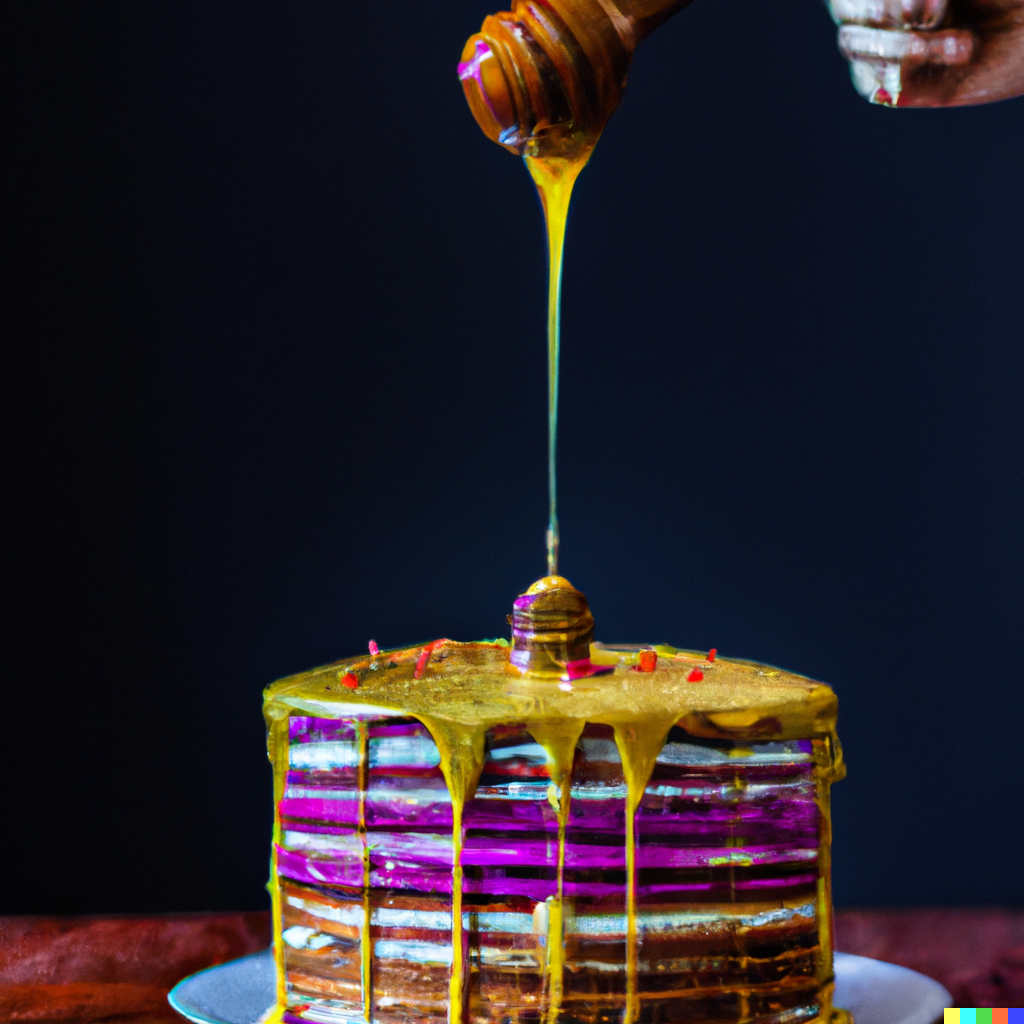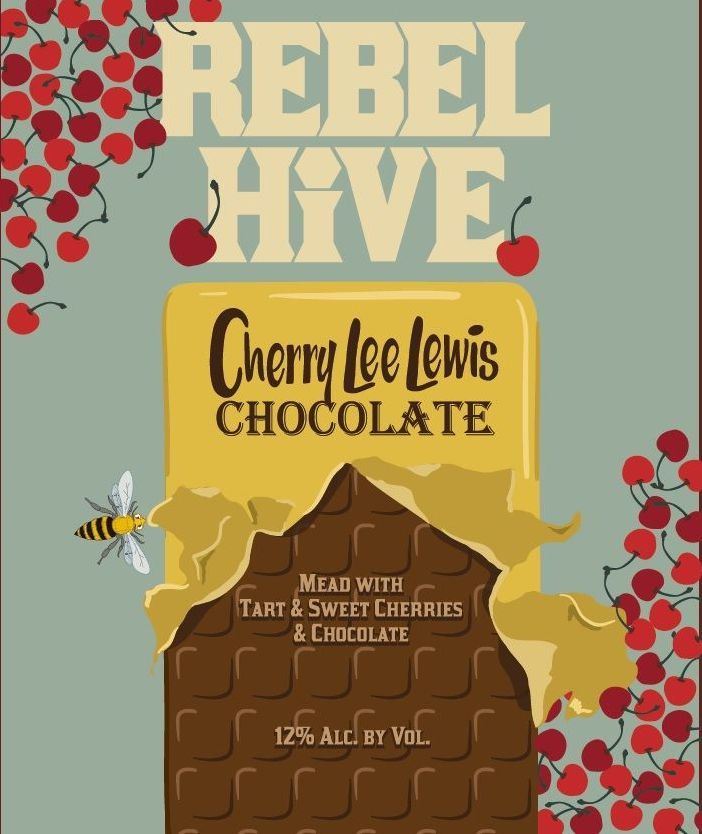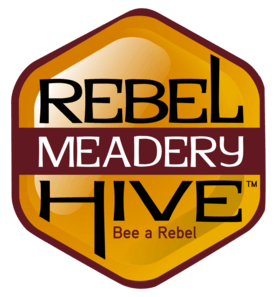Mead Myth 1: Mead Must be Sweet
Mead Must be Sweet… After All, It’s Made from Honey

Welcome, Rebels! Today, we embark on a journey to dispel a pervasive myth that has long lingered around the world of mead: the belief that mead must be overwhelmingly sweet. At Rebel Hive Meadery, we're here to tell you that this delightful honey-based drink offers a captivating array of flavors, ranging from bone-dry to exquisitely sweet. So, let's delve into the fascinating world of mead and debunk the notion that sweetness is an unyielding standard!
Honey: The Fermentable Sugar Wonder
Before we dive into the misconception, let's examine the star ingredient of mead – honey! The nectar of the gods, honey is a remarkable gift from nature. It is composed primarily of the sugars glucose and fructose.
Now for the nerdy stuff, because you know I can’t resist!
Fructose and glucose are simple sugars, known as monosaccharides, that play essential roles in various biological processes, including metabolism and energy production. These sugars are 100% fermentable due to their chemical structure and the specific enzymatic processes involved in fermentation.
- Fructose, with the molecular formula C6H12O6, is a ketose sugar, meaning it has a ketone functional group. It is commonly found in fruits, honey, and root vegetables.
- Glucose, also with the molecular formula C6H12O6, is an aldose sugar and is a primary source of energy for many organisms. It is a crucial component of carbohydrates and is present in various foods like grains, starchy vegetables, and sweeteners like corn syrup.
During fermentation, yeast and other microorganisms metabolize these sugars through a series of enzymatic reactions, primarily glycolysis, to produce energy, carbon dioxide, and alcohol. Unlike more complex sugars, fructose and glucose lack structural complexities that could hinder the fermentation process. This makes them readily available substrates for the microorganisms to convert into alcohol and other byproducts.
Okay, back to reality…
Because of their simple structures, glucose and fructose, and therefore honey, is 100% fermentable. Meaning, the honey we start with can be 100% eaten by yeast, as long as we add enough water to dilute it. During fermentation, yeast consumes these sugars as a food source, making naturally dry meads the standard, not the exception!
The Sweet Side of Mead
Now that you know honey contains 100% fermentable sugar, let’s look at how we achieve sweetness in a finished mead. Contrary to popular belief, extra steps are needed to retain honey in a finished product. To preserve a mead's sweetness, mead makers must ensure that the yeast haven’t consumed all the fermentable sugars present in the honey. How is this accomplished? Let's take a closer look at three key methods:
- Starting with Extra Honey: In some cases, mead makers add more honey at the beginning of the fermentation process than the yeast can consume entirely. As the yeast reaches its alcohol tolerance, the yeast can not continue fermenting, leaving the remaining sugars behind. This can result in anything from a semi-dry to a super sweet mead.
- Halt Fermentation: Another technique involves halting fermentation before all the sugars are consumed. This is often achieved by chilling the mead or using other methods to stop the yeast's activity. At Rebel Hive, we use a process called Cold-Crashing. Remember, yeast are living creatures but they are “simple” in that they are only one-celled organisms. This means they are very susceptible to their environment, including temperature. If we drop the mead’s temperature to 35°F, it shuts down the yeast and puts them in a dormant state. The residual sugars remain in the mead, lending sweetness to the final product.
- Back-Sweetening: One of the most common approaches to achieve sweetness in mead is back-sweetening. Here, mead makers ferment the mead dry to ensure all sugars are converted into alcohol. Then, after stabilizing the mead to prevent further fermentation, additional honey is added to achieve the desired level of sweetness.
Rebel Hive's 4th Anniversary Mead: A Marvelous Bourbon Barrel Aged Dry Mead
Contrary to popular belief, mead can be crafted to be wonderfully dry. By allowing the yeast to consume all the sugar present in honey, mead makers can create a delightfully crisp beverage.
As we celebrate our 4th anniversary at Rebel Hive Meadery, we're excited to announce a truly special creation – a high-end, bourbon-barrel aged, dry mead. This extraordinary mead showcases the artistry and expertise of our mead, and is the culmination of over a decade of mead making experience. This one is sure to captivate your taste buds with its complexity and depth of flavor.
This dry mead was meticulously crafted using a combination of Orange Blossom, Clover, and Avocado Blossom Honeys, as well as dark cherries, ensuring that all sugars were fermented out, leaving behind a beautifully crisp mead with 14.5% Alcohol. To elevate this already remarkable mead, we carefully aged it in premium bourbon barrels. The result is an enchanting symphony of bourbon's rich oaky notes, boozy alcohol, depth from the Avocado Honey, and subtle fruitiness from the cherries.
Embrace the Diversity of Mead
At Rebel Hive Meadery, we take pride in offering meads that cater to every palate, from those who relish the dry, sophisticated sips to those who seek the indulgence of sweetness. Honey, as the foundation of our craft, allows us to push the boundaries of mead-making, challenging the notion that mead must always be sweet.
So, when you embark on your next mead-venture, be sure to explore the vast spectrum of flavors, from bone-dry to super sweet, and discover the wonders that honey brings to this ancient libation. Cheers to a world of mead without limits, and we can't wait to raise a glass with you as we unveil our 4th anniversary bourbon barrel aged dry mead – a true masterpiece in the art of mead-making!
Recent Articles
BEE A REBEL
Tell a Friend!
Our customers are our best advertising! Please share your love for our meads with your friends and family. Thanks for your support!



